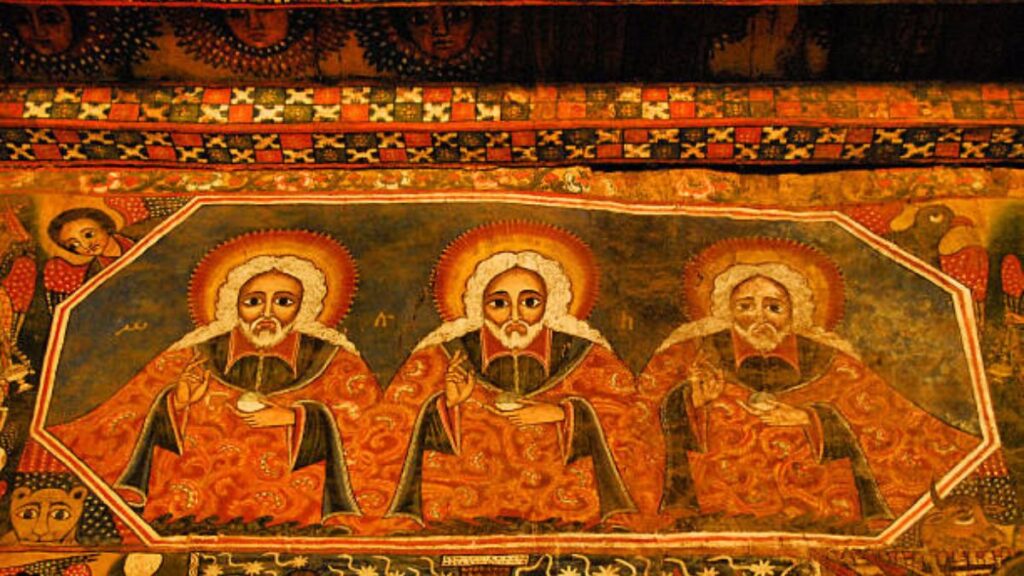The story of the Three Magi, or Wise Men, is one of the most enduring and captivating narratives in Christian tradition. The tale of these mysterious figures who traveled from the East to bring gifts to the infant Jesus is well-known around the world. However, did you know that some scholars and traditions claim that the three magi were all from Ethiopia? This assertion has intrigued historians, theologians, and enthusiasts for centuries. In this article, we’ll delve into the history, significance, and evidence surrounding the claim that all three magi hailed from Ethiopia.
The Traditional Narrative of the Three Magi
Before we explore the Ethiopian connection, it’s important to first understand the traditional narrative of the Three Magi. According to Christian tradition, the Magi were three wise men or scholars who followed a star to find the newborn Jesus. Their journey, which is detailed in the Gospel of Matthew, took place after the birth of Jesus in Bethlehem.
The Magi brought with them three symbolic gifts:
- Gold: Symbolizing kingship and wealth.
- Frankincense: Symbolizing divinity and priesthood.
- Myrrh: Symbolizing suffering and death.
Over time, these figures have come to represent the diversity of the world in terms of culture and ethnicity. They are typically depicted as coming from different parts of the world, often imagined as representing Asia, Africa, and Europe. However, various Christian and cultural traditions have presented their own interpretations of the Magi’s origins.
The Ethiopian Connection: Three Magi All From Ethiopia
The claim that the Three Magi were all from Ethiopia is rooted in both historical tradition and religious lore. Ethiopia holds a unique and significant place in Christian history, particularly in the Eastern Orthodox Church. According to certain Ethiopian Christian traditions, the Magi were not from the distant East as commonly believed, but from Ethiopia itself. This belief is based on several theological, historical, and cultural factors.
The Role of Ethiopia in Early Christianity
Ethiopia has long been considered one of the oldest Christian kingdoms in the world. Christianity spread to the region as early as the 4th century, with the Kingdom of Aksum officially adopting Christianity in 330 AD, making it one of the earliest states to do so. However, the presence of Christianity in Ethiopia predates the establishment of the Ethiopian Orthodox Church. According to some interpretations of biblical texts, the ancient Ethiopian church had close ties to the early Christian world.
The Book of Acts (8:27-40) recounts the story of the Ethiopian eunuch, a high-ranking official in the court of the Queen of Ethiopia, who was baptized by Philip the Apostle. This passage highlights the early interactions between Ethiopia and the Christian faith. The Ethiopian Orthodox Church, which is one of the oldest Christian denominations in the world, has a rich tradition that often blends biblical narratives with local folklore and religious symbolism.
The Magi as Ethiopian Figures
One of the key reasons the Three Magi are thought to have originated from Ethiopia lies in the ancient Ethiopian Church’s veneration of the Magi. In some versions of Ethiopian Christian tradition, the Three Magi are depicted as royal or priestly figures who are closely tied to the Ethiopian monarchy.
Ethiopian Christian texts such as the Kebra Nagast, an ancient manuscript that outlines the history and legend of the Ethiopian monarchy, present an intriguing connection between Ethiopia and the birth of Christ. The Kebra Nagast includes references to the Queen of Sheba, who is traditionally believed to have traveled to visit King Solomon in Jerusalem. According to some Ethiopian legends, the Queen of Sheba’s interactions with Solomon led to the birth of Menelik I, the first emperor of Ethiopia, establishing a long-standing royal lineage believed to be connected to the biblical figures.
In this context, the Ethiopian Church often claims that the Magi were not merely visitors from a distant land, but part of Ethiopia’s own royal or priestly tradition. The belief is that these three wise men, often named in various traditions as Caspar, Melchior, and Balthazar, were actually Ethiopian kings or priests who recognized the birth of Christ through divine inspiration.
Ethiopian Iconography and Depictions of the Magi
Ethiopian religious art also supports the notion that the Magi were Ethiopian. In numerous Ethiopian Orthodox icons and murals, the Three Magi are depicted with distinctly African features. This artistic representation contrasts with the more commonly Westernized portrayals of the Magi as light-skinned men, which reflects local religious and cultural interpretations of the biblical story.
The Ethiopian Church’s depictions of the Magi emphasize the important role Ethiopia played in the story of Christ’s birth. In Ethiopian iconography, the Magi are often shown wearing royal attire and carrying symbolic gifts, just as described in the Gospel of Matthew. These artistic choices affirm the deep connection Ethiopia has to the tradition of the Magi.
The Historical and Cultural Context of the Claim
While there is no definitive historical evidence to confirm that the Three Magi were definitively from Ethiopia, the Ethiopian claim is deeply embedded in the religious and cultural fabric of the region. Ethiopia’s connection to the early Christian world, coupled with its rich tradition of religious symbolism, makes the notion of Ethiopian Magi a compelling interpretation.
The Role of Africa in Early Christian Traditions
The ancient African civilizations, particularly Egypt and Ethiopia, played a significant role in the development of early Christianity. Egypt was home to some of the earliest Christian communities, and it is widely believed that the Christian faith spread into Africa through Egypt and Ethiopia. The Ethiopian Church has long maintained that Christianity’s roots in Africa were significant and that Ethiopia was an early center for Christian thought and practice.
Some scholars suggest that the inclusion of Ethiopia as the birthplace of the Magi reflects an attempt by the Ethiopian Orthodox Church to solidify the region’s central role in Christian history. By emphasizing the Ethiopian origins of the Magi, the Church asserts its importance and continuity in the early days of Christianity.
A Comparative Chart: The Three Magi in Different Traditions
| Aspect | Traditional Western View | Ethiopian Tradition |
| Origins | Magi are typically from Persia or Arabia | Magi are believed to be from Ethiopia |
| Names | Caspar, Melchior, and Balthazar | Caspar, Melchior, and Balthazar (but with African features in iconography) |
| Gifts | Gold, Frankincense, Myrrh | Gold, Frankincense, Myrrh (same gifts) |
| Role in Christian History | Representing the wider Gentile world | Representing the African world’s early recognition of Christ |
| Depictions in Art | Often depicted as European or Middle Eastern | Depicted with African features and Ethiopian royal attire |
| Religious Significance | Key figures in the nativity story | Key figures in Ethiopian Christian lore and royal tradition |
The Modern Relevance of the Ethiopian Claim
In today’s world, the Ethiopian claim regarding the Three Magi holds significant cultural and theological importance. For Ethiopian Christians, the belief that the Magi were Ethiopian reinforces their connection to the global Christian community and underscores Ethiopia’s historical and spiritual significance.
For those outside Ethiopia, this tradition provides an alternative perspective on a well-known biblical story, highlighting the diversity of interpretations that exist within Christianity. The claim also sparks broader discussions about the representation of Africa in Christian history and the role of the continent in the early spread of the faith.
Conclusion: The Enduring Mystery of the Three Magi
The question of the origins of the Three Magi remains unresolved. While many traditions suggest that the Magi were from Persia or Arabia, the Ethiopian claim that the Three Magi were all from Ethiopia offers a compelling perspective. This claim is deeply rooted in Ethiopia’s rich Christian tradition, historical narratives, and religious symbolism.
Whether or not the Magi were indeed Ethiopian, the story of their visit to the Christ child continues to inspire millions of Christians around the world. The Ethiopian interpretation adds a unique layer of meaning to the narrative, reminding us of the diverse ways in which the story of the nativity has been understood across cultures and centuries.
In the end, the story of the Three Magi invites us to reflect on the broader themes of faith, journey, and recognition of the divine—regardless of where we come from. The claim that the Three Magi were all from Ethiopia, whether historically accurate or not, serves as a testament to the enduring power of this iconic narrative.







